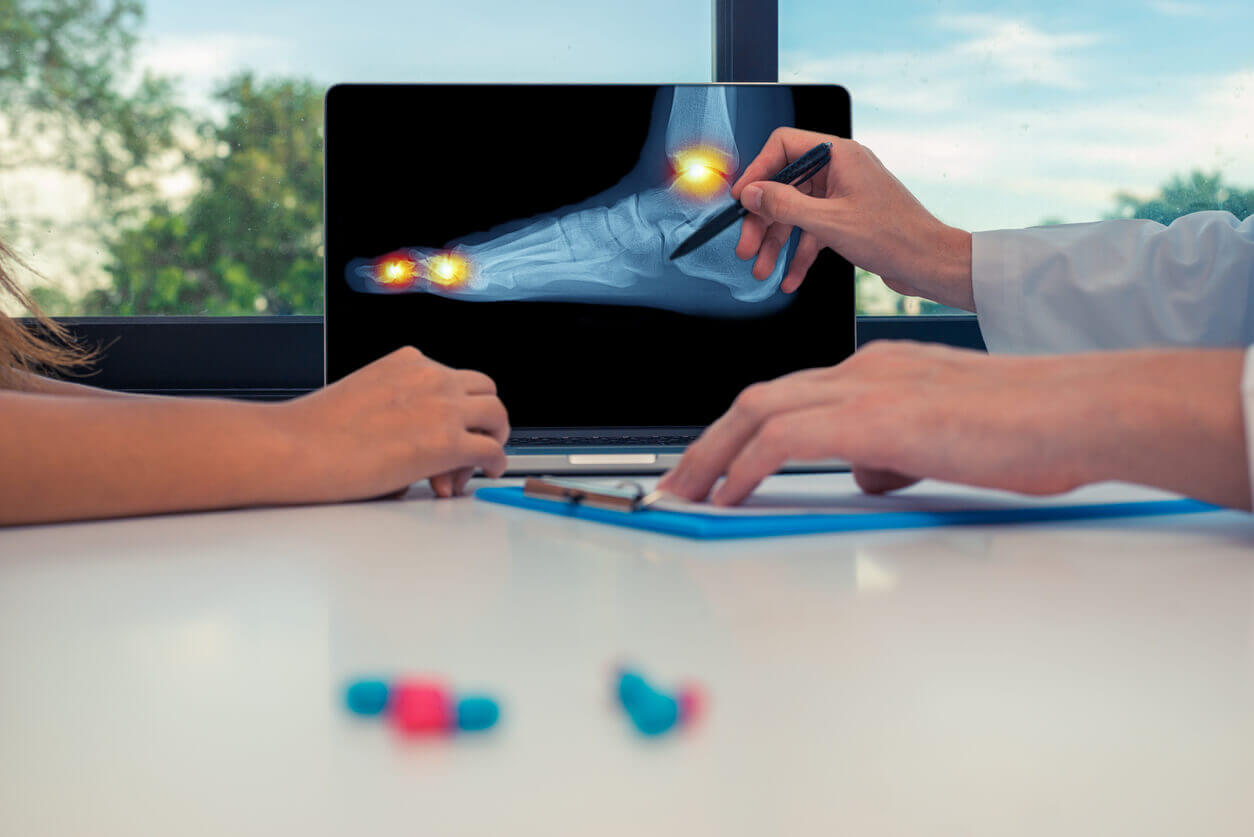Charcot foot is a rare but serious condition that is frequently misdiagnosed, at times with terrible consequences. The disease affects individuals with peripheral neuropathy (a lack of sensation in the extremities), and so is particularly dangerous for those with diabetes who often suffer this type of nerve damage. Because of its nebulous initial symptoms, combined with the nerve insensitivity of patients with the condition, Charcot foot may be misdiagnosed by podiatrists who think the patient has a more common, benign problem.
Misdiagnosis of Charcot foot can lead to fractures, dislocations, and deformities, such as rocker-bottom foot deformity which occurs when the arch collapses. Depending on the location of the bone break, the patient’s toes can start to curve under like claws or the ankle can become deformed and unstable. If Charcot foot is not properly diagnosed and treated, it can even lead to severe infections that require amputation.
If your Charcot foot has been misdiagnosed by a negligent podiatrist and you have endured serious harm as a result, you need a skilled podiatry malpractice attorney to help you file a lawsuit so that you can obtain the damages you are entitled to. In the New York City area, you will find no more accomplished legal professional in this field than Lawrence M. Karam, PC of Dental & Podiatry Malpractice Lawyers of New York.
The Miseries of Charcot Foot
Although Charcot affects bones, joints and soft tissues of the foot or ankle, and can weaken bones to the breaking point and joints until they dislocate, its first symptoms can mimic symptoms of much less frightening foot problems. This is particularly true because victims of this disorder do not normally experience pain.
Tragically, however, if not diagnosed at an early stage, patients may experience collapse and deformity of their foot and ankle, causing pressure sores to develop. Since such sores can easily infect, especially in a person suffering from neuropathy, infections may worsen catastrophically and lead to amputation.
Symptoms of Charcot Foot
Considering how serious Charcot foot is, it is surprising that the patient’s first symptoms may be only redness, skin that is warm to the touch, and swelling of the region. These symptoms may be mistaken for insect bites, allergic reactions, muscle strains, or other minor injuries which is why they are too often misdiagnosed. Sometimes, patients also experience crepitus, a grinding sensation of the involved joints when unstable bone fragments rub against one another. Again, however, because of patients’ decreased sensitivity, this symptom may be missed.
It is important to remember that subtle symptoms do not excuse incompetence. After all, the reason you visit a well-trained podiatrist is that he or she should be alert to possibilities of rare disorders, and careful about prejudging medical conditions. You have a right to expect that a doctor who specializes in foot and ankle problems will know a serious incipient health issue when she/he sees one.
If the podiatrist you went to dismissed your symptoms as “nothing to worry about,” failed to take any diagnostic tests (e.g. X-rays, MRI or CT scans) or to follow-up with you at a later date, he/she may have been guilty of podiatry malpractice. If you have suffered serious complications as a result of your misdiagnosis, you should seek legal counsel. With the assistance of a knowledgeable, experienced podiatry malpractice lawyer, you may be able to file a lawsuit and obtain substantial damages for your medical costs, and pain and suffering, loss of income, and permanent disability.
Why are some people at increased risk for Charcot foot?
There are several reasons patients are at greater risk of developing Charcot foot, including:
- Being diabetic
- Taking medications that cause bone loss (such as those taken after an organ transplant)
- Having had an unrecognized sprain or other foot or ankle injury
You’ll notice that these risks are interrelated since the peripheral neuropathy that makes diabetics unable to feel pain may cause injuries to go unnoticed. This is why it is crucial to have a keen podiatrist on the case.
The leading cause of Charcot foot is diabetes mellitus, affecting 1 out of 700 diabetic patients. Other risk factors for the disorder include:
- Chronic alcoholism
- Hansen’s disease (leprosy)
- Multiple sclerosis
- Syringomyelia (a disorder of the spinal cord)
- Congenital insensitivity to pain
Strangely, patients who develop Charcot foot do not have poor circulation in their extremities.
Misdiagnosis of Charcot Foot Can Negatively Impact Your Whole Life
Almost one-third of patients later proven to have Charcot foot are misdiagnosed with cellulitis. Other misdiagnoses include: osteomyelitis, gout, ankle sprain, simple fracture, tendonitis, and osteoarthritis. If you are suffering because your Charcot foot was misdiagnosed, don’t wait. Contact an aggressive podiatry malpractice attorney who will fight for your right to the compensation you deserve.


